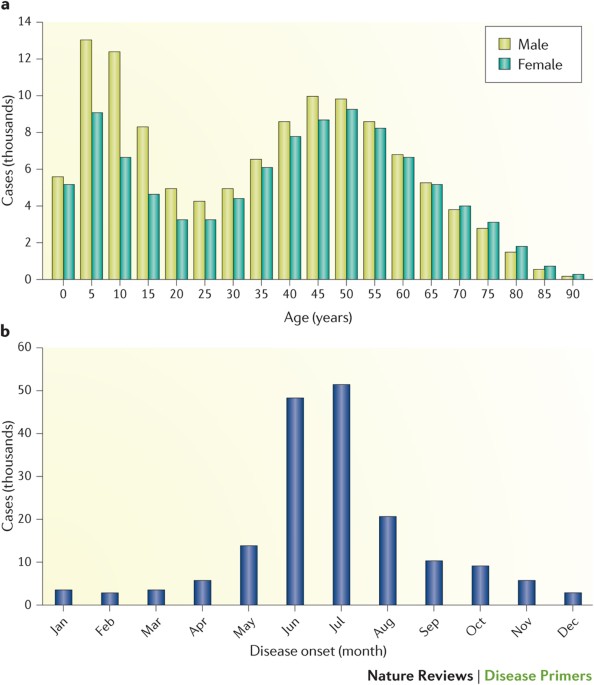plasmid sequence - Immunetics Immuno Diagnostic
Lyme borreliosis is a tick-borne disease that occurs predominantly in temperate regions of the Northern Hemisphere and is caused primarily by the bacteria Borrelia burgdorferi in North America and Borrelia afzelii or Borrelia garinii in Europe and Asia. The infection usually begins with an expanding skin lesion, known as erythema migrans (called stage 1), which, if left untreated, may be followed by an early disseminated infection, particularly neurological abnormalities (stage 2), and an infection late, especially arthritis in North America or chronic atrophic acrodermatitis in Europe (stage 3). However, the disease can present with any of these manifestations. During infection, bacteria migrate through host tissues, adhere to certain cells, and can evade immune clearance.
However, these organisms are eventually eliminated by both innate and adaptive immune responses, and most of the inflammatory manifestations of the infection resolve. With the exception of patients with erythema migrans, Lyme borreliosis is diagnosed based on a characteristic clinical constellation of signs and symptoms with serological confirmation of infection. In general, all manifestations of the infection can be treated with appropriate antibiotic regimens, but the disease may be followed by post-infectious sequelae in some patients. Prevention of Lyme borreliosis primarily involves avoiding tick bites through personal protection measures.

Lyme borreliosis is a major emerging infectious disease1,2 that is commonly reported in North America and Europe, but is also found in parts of Asia3. The US Centers for Disease Control and Prevention estimate that approximately 300,000 new cases of the disease occur annually in the United States, primarily in the northeastern states4.
Lyme arthritis was recognized in 1976 due to the geographic grouping of children with arthritis in Lyme, Connecticut in the United States5. Following this report, it was revealed that Lyme arthritis was part of a complicated multisystem disease, including erythema migrans (a slowly expanding skin lesion), Bannwarth syndrome, and chronic atrophic acrodermatitis, which had been described in Europe. These syndromes clustered after isolation of Borrelia burgdorferi, a spirochete, from Ixodes scapularis (also known as Ixodes dammini ticks) 6. In addition, B. burgdorferi was recovered from patients with these clinical manifestations of infection1, and the disease, which commonly affects the skin, joints, heart, or nervous system, now known as Lyme borreliosis.
B. burgdorferi sensu lato (B. burgdorferi s.l .; that is, B. burgdorferi in the general sense) now comprises 20 different genospecies3. Three genospecies of B. burgdorferi s.l. are the main responsible for human Lyme borreliosis: B. burgdorferi, Borrelia afzelii and Borrelia garinii7. These genospecies are transmitted by different species of ticks and are responsible for Lyme borreliosis in different geographic regions, for example B. burgdorferi sensu stricto (i.e. B. burgdorferi in the strict sense) is the main cause of Lyme borreliosis in the United States. United States, while B. afzelii and B. garini (and less commonly B. burgdorferi) cause Lyme borreliosis in Europe. The heterogeneity between B. burgdorferi s.l. Strains appear to be the main factor causing regional differences in the clinical expression of human Lyme borreliosis8. For example, B. burgdorferi in the northeastern United States is particularly arthritic, B. afzelii primarily causes skin infections, and B. garinii is especially neurotropic2.
In this Manual, we detail the epidemiology, pathophysiology, clinical manifestations, prevention, management, and post-treatment sequelae of infection. In addition, we offer a perspective for better diagnoses, treatment studies, tick control, and vaccination for this complex tick-borne disease.
epidemiology
In the United States, the age distribution of Lyme borreliosis is typically bimodal, with peaks between children aged 5 to 15 years and adults aged 45 to 55 years3,9 (Fig. 1a). The incidence of Lyme borreliosis is higher among men than women in the <60 years of age, but the sex ratio is almost the same or slightly higher in women in the older age groups. In some European countries, such as Slovenia and Germany, the incidence of Lyme borreliosis is higher among adult women (55%) than among men (45%) 9–11. In the northeastern United States and most of Europe, the mese
